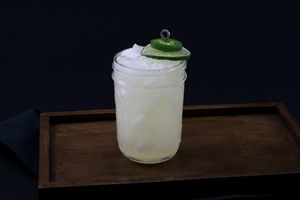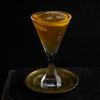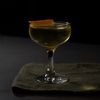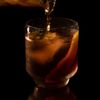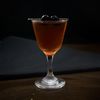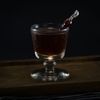 NO
199
NO
199

Unlike more infamous drinks sporting his name, Ernest Hemingway actually might have created this drink. The absinthe and Champagne concoction shares its name with his 1932 fictional bullfighting tale Death in the Afternoon, and was published in So Red the Nose, or Breath in the Afternoon, a 1935 cocktail book with contributions from famous authors. Hemingway’s recipe is the first entry in this rather colorful cocktail book and is accompanied by an anecdote surrounding the recipe's development and some simple instructions: "Pour one jigger absinthe into a Champagne glass. Add iced Champagne until it attains the proper opalescent milkiness. Drink three to five of these slowly." Initially this recipe seemed like a drink that had survived on history and kitsch alone, but trying it for the first time, we were pleasantly surprised. And while we all should be wary of the author’s dosing recommendations, the fact that this recipe is as easy as a jack and coke, but 10 times (at least) classier, makes for a pretty big sell.
Decadent and strong, Death in the Afternoon hinges on an unlikely yet complementary pair. It hits the nose with absinthe and some underlying notes of grape, but anise dominates. First on the sip is more of the absinthe, and a strong finish of Champagne. The absinthe will louche (or develop a beautiful milky opaqueness) as the flute fills up with champagne. Break this one our for celebrations, as its show stopping bubbles and opalescence are ideal for events that call for something fun, powerful, and dead easy.
Whether you like this drink or not will depend heavily on if you like the particular brand of absinthe involved. There are many types of absinthe out there, so sample one by itself before trying it in this beverage. Our current go-to is Absinthia, which is relatively mild and ideal for mixing; it allows for a substantial measure that doesn’t overpower the sparkling. The amount of absinthe can and should be modified based on the style you’re using, The original recipe calls for 1 jigger—or a whopping one-and-a-half ounces—of absinthe. For most, this will be too much. Absinthe has a particular flavor profile, some may prefer more, some may prefer less. Many contemporary versions opt for a lighter pour, some reducing the measure to as little as a quarter or half ounce. We’re inclined to agree with the reduced measure and tend to land somewhere in the middle at around 1 oz. A good, dry (brut) sparkling wine or Champagne works well here. Unless your goal is decadence, we wouldn’t recommend spending too much. As for preparation tips, we think Hemingway’s directives are clear enough, so pour booze in cup and squeal with delight.


